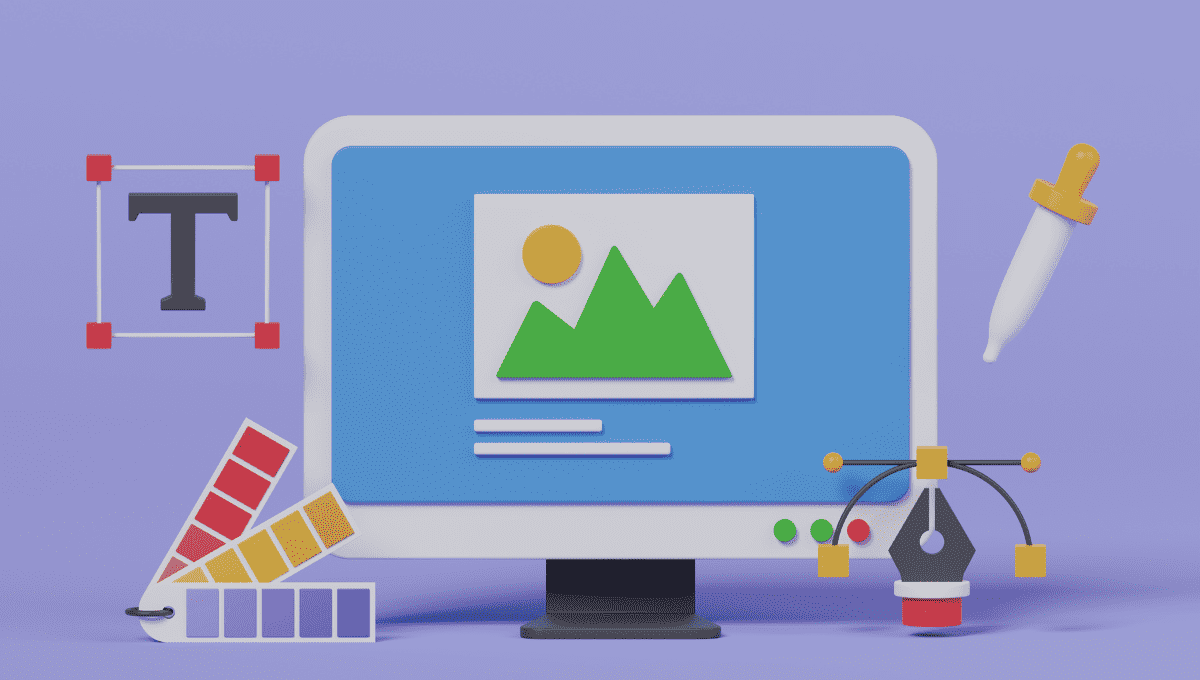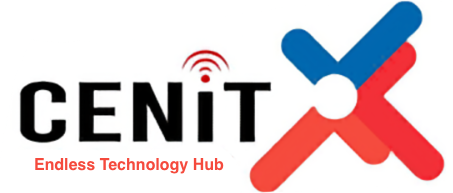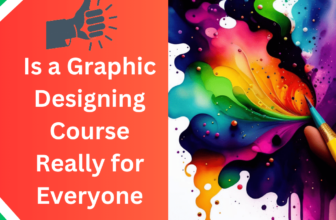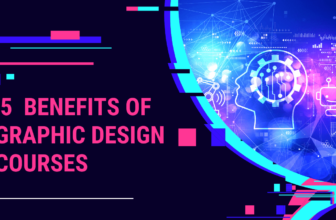
In today’s digitally-driven world, graphic design’s ubiquity is undeniable, shaping how we perceive products, brands, and ideas. Amid this significance lies a choice: traditional courses or intensive boot camps for skill acquisition. This article delves into the Graphic Design: Courses Vs Bootcamps’ debate, exploring the factors that steer this decision and shedding light on the intricacies of both paths.
Table of Content:
Table of Contents
Education Evolution in Graphic Design: Courses vs Boot camps
Education in Graphic Design Courses Vs Boot camps has undergone significant transformation over the years. The options have diversified from brick-and-mortar classrooms to online modules, years-long programs, and short, focused boot camps. This flexibility caters to various learning styles and life situations but also creates a puzzle of choices for aspiring designers.
Traditional Education Graphic Design: Courses vs Boot camps
3.1 Definition and Scope
Traditional Graphic Design: Courses vs Boot camps usually occur in academic institutions such as colleges or universities. These courses provide an in-depth study of graphic design, covering its history, principles, and techniques.
3.2 Duration and Pace
Typically spanning two to four years, these programs offer a paced learning environment, allowing a deep dive into each topic.
3.3 Curriculum
“Diverse subjects are integral to Graphic Design: Courses vs Boot camps comparison, encompassing art and design history, typography, color theory, and digital illustration. This breadth equips learners with essential skills for both traditional courses and intensive boot camps, ensuring a comprehensive understanding of graphic design.”
3.4 Pros and Cons
Pros: Graphic Design: Courses Vs boot camps offer detailed topic coverage, structured learning, and globally recognized accreditation. Traditional courses provide in-depth exploration, while boot camps deliver focused skill acquisition, catering to diverse learning preference
Cons: Graphic design: Courses vs Boot camps comparison reveals potential drawbacks of traditional courses, including longer duration, higher costs, and occasional limited focus on current industry trends. Boot camps, on the other hand, prioritize quick skill acquisition and practical knowledge.”
Exploring Boot camps in Graphic Design: Courses vs Boot camps
4.1 Definition and Scope
Graphic Design boot camps are short, intensive courses to equip students with the skills they need to enter the job market quickly.
4.2 Duration and Pace
Usually lasting 8 to 12 weeks, these courses are high-paced and require a full-time commitment.
4.3 Curriculum
Focused on hands-on projects and real-world applications, boot camps often bypass theory in favor of practical skills.
4.4 Pros and Cons
Pros: Graphic Design: Courses vs Boot camps comparison highlights boot camps’ advantages: quick job market entry, cost-effectiveness, and practicality. While traditional courses offer comprehensive education, boot camps cater to swift skill development and industry-ready proficiency
Cons: “Considering Graphic Design: Courses vs Boot camps, boot camps may have limitations like narrower scope, lesser recognized credentials, and potential overwhelm due to their intensive nature. Traditional graphic design courses offer broader education and established credentials, making the choice dependent on individual preferences and goa
Cost Comparison in Graphic Design: Courses vs Boot camps

Traditional design courses usually come with higher tuition fees, which may or may not include additional costs like books and software. Bootcamps, on the other hand, are generally more cost-effective but may require upfront payment in full.
Graphic Design Courses vs Boot camps in Skill Level Requirements
Traditional graphic design courses are well-suited for beginners and those looking for a comprehensive education. Bootcamps are better suited for individuals with foundational knowledge and looking to specialize quickly.
Accreditation and Certificates: Graphic Design Courses vs Boot camps
“In the Graphic design: Courses vs Bootcamps discussion, degrees from established institutions hold global significance, while boot camp certificates are gaining recognition but haven’t reached the same level of widespread acceptance. The choice hinges on considering both the credibility of traditional graphic design courses and the emerging value of intensive boot camps.”
Learning Environment in Graphic Design: Courses vs Boot camps
8.1 Traditional Courses
Expect structured classes, deadlines, and assessments, combined with the freedom to explore different facets of design.
8.2 Bootcamps
Anticipate a fast-paced, project-focused environment where real-world application takes precedence.
Graphic Design: Courses vs Boot camps for Job Market Preparedness
While traditional courses offer a solid foundation, boot camps are designed to make you job-ready quickly, often partnering with companies for placements.
- How to Choose: Key Takeaways
- Assess your current skill level.
- Consider your learning style.
- Evaluate your time commitment.
- Weigh the financial aspects.
- Examine your career goals.
FAQs
What is the main difference between traditional courses and boot camps?
Traditional courses offer a comprehensive, long-term education, while boot camps provide fast-paced, job-focused training.
Are boot camp certificates as valued as university degrees?
Bootcamp certificates are gaining recognition but have yet to be as globally accepted as traditional degrees.
Who are boot camps best suited for?
Bootcamps are ideal for those with foundational knowledge who want to quickly specialize and enter the job market.
What is the typical learning environment in traditional courses and boot camps?
Traditional courses have structured classes and assessments, while boot camps offer a project-focused, fast-paced environment.
How do costs compare between the two?
Traditional courses generally have higher tuition fees, while boot camps are often more cost-effective but may require upfront payment.
Conclusion
Choosing between a traditional graphic design courses vs a boot camps is a crucial decision that hinges on multiple factors, such as your career goals, financial situation, and learning preferences. Both pathways offer distinct advantages and drawbacks, so take the time to consider what will serve you best in the long term.
FAQs
What is the main difference between traditional Graphic design courses vs boot camps?
Traditional courses offer a comprehensive, long-term education, while boot camps provide fast-paced, job-focused training.
Are boot camp certificates as valued as university degrees?
Bootcamp certificates are gaining recognition but have yet to be as globally accepted as traditional degrees.
Who are boot camps best suited for?
Bootcamps are ideal for those with foundational knowledge who want to quickly specialize and enter the job market.
What is the typical learning environment in traditional graphic design courses Vs boot camps?
Traditional courses have structured classes and assessments, while boot camps offer a project-focused, fast-paced environment.
How do costs compare between the two?
Traditional courses generally have higher tuition fees, while boot camps are often more cost-effective but may require upfront payment.







